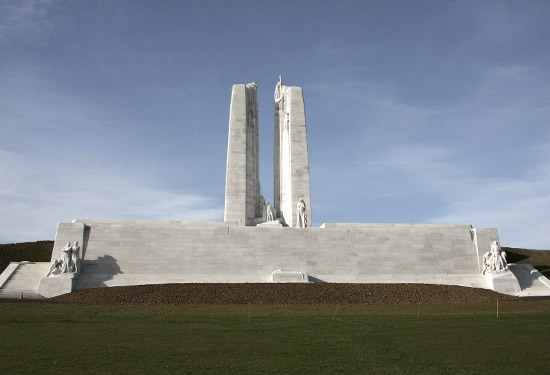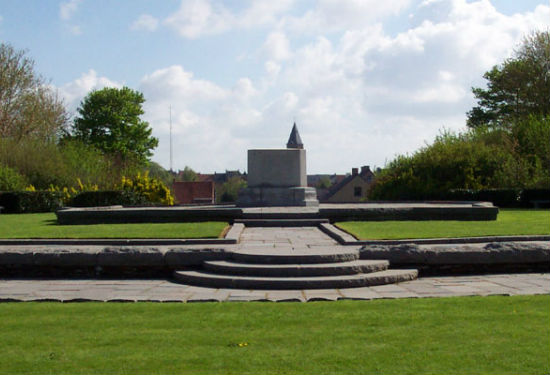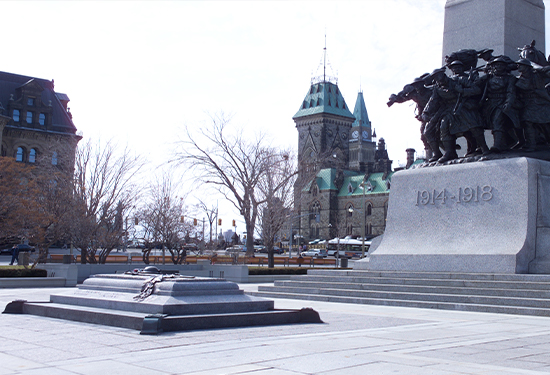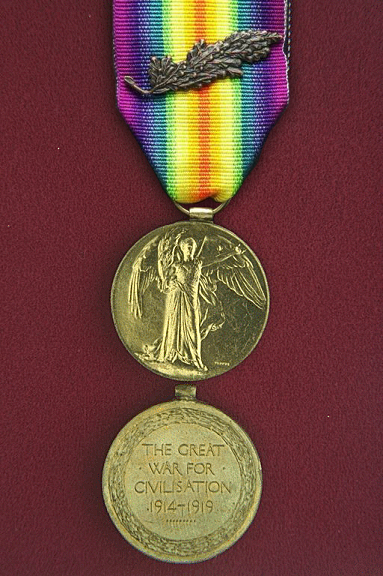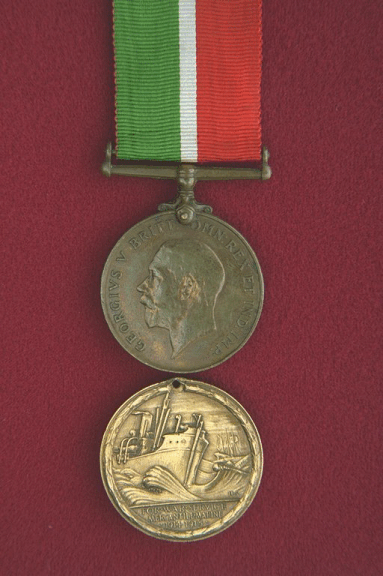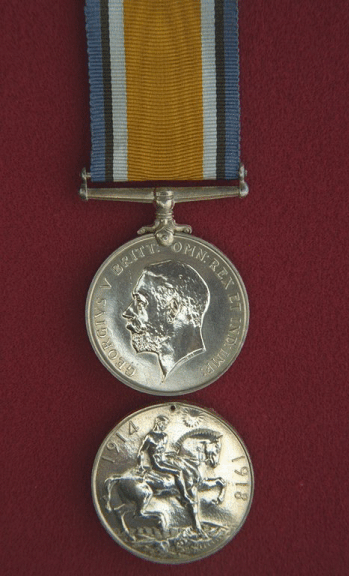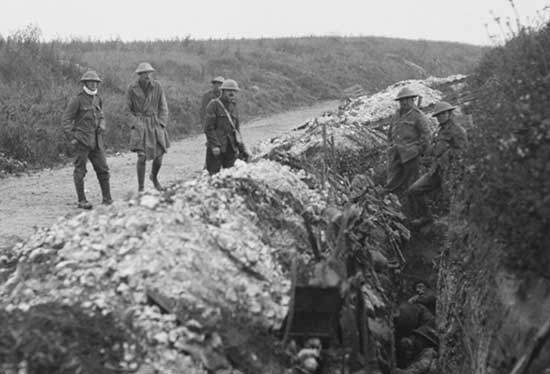
2nd Battle of Ypres
Facing the first poison gas attack of the war, Canadian troops helped hold the line against the Germans.
22 April – 25 May 1915
First World War
Table of contents
Canadians move to the front
In the first week of April 1915, the Canadian troops were moved from their quiet sector to a bulge in the Allied line in front of the City of Ypres. This was the famed—or notorious—Ypres Salient, where the British and Allied line pushed into the German line in a concave bend. The Germans held the higher ground and were able to fire into the Allied trenches from the north, the south and the east. On the Canadian right were two British divisions, and on their left a French division, the 45th (Algerian).
A new weapon: poison gas
Here on April 22, the Germans sought to remove the Salient by introducing a new weapon, poison gas. Following an intensive artillery bombardment, they released 160 tons of chlorine gas from cylinders dug into the forward edge of their trenches into a light northeast wind. As thick clouds of yellow-green chlorine drifted over their trenches the French defences crumbled, and the troops, completely bemused by this terrible weapon, died or broke and fled, leaving a gaping 6.5 kilometre hole in the Allied line.
Germans on the offensive
German troops pressed forward, threatening to sweep behind the Canadian trenches and put 50,000 Canadian and British troops in deadly jeopardy. Fortunately the Germans had planned only a limited offensive and, without adequate reserves, were unable to exploit the gap the gas created. In any case their own troops, themselves without any adequate protection against gas, were highly suspicious of the new weapon. After advancing only 3.25 kilometres they stopped and dug in.
Fighting throughout the night
All through the night the Canadian troops fought to close the gap. In addition they mounted a counter-attack to drive the enemy out of Kitcheners' Wood, an oak plantation near St. Julien. In the morning two more disastrous attacks were made against enemy positions. Little ground was gained and casualties were extremely heavy, but these attacks bought some precious time to close the flank.
Canadians hold the line
The fierce battle of St. Julien lay ahead. On April 24, the Germans attacked in an attempt to obliterate the Salient once and for all. Another violent bombardment was followed by another gas attack in the same pattern as before. This time the target was the Canadian line. Here, through terrible fighting, withered with shrapnel and machine-gun fire, hampered by their issued Ross rifles which jammed, violently sick and gasping for air through soaked and muddy handkerchiefs, they held on until reinforcements arrived.
Heavy losses for Canada
Thus, in their first major appearance on a European battlefield, the Canadians established a reputation as a formidable fighting force. Congratulatory messages were cabled to the Canadian Prime Minister. But the cost was high. In these 48 hours, 6,035 Canadians, one man in every three, became casualties of whom more than 2,000 died. They were heavy losses for Canada's little force whose men had been civilians only several months before—a grim forerunner of what was still to come.
- Date modified:








